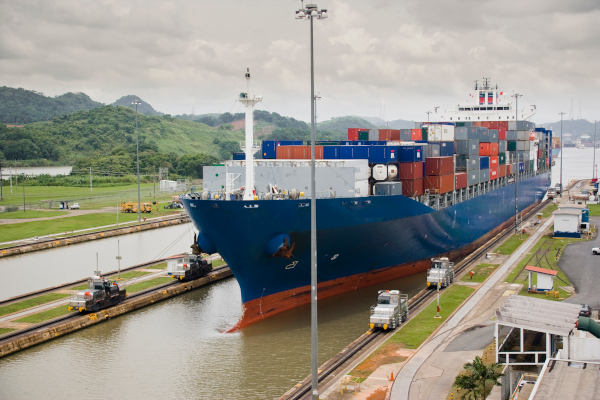
The supply chain is becoming synonymous with disruption. And now a new one could further cloud what was shaping up already as an uncertain holiday season.
Drought conditions have led to a backup of ships looking to traverse the Panama Canal, potentially putting retailer inventory restocking in jeopardy just as North American retailers are looking to build stockpiles back up.
“Ongoing challenges at the Panama Canal are making existing worries for industries even worse,” Christian Roeloffs, co-founder and CEO of Container xChange, said in a blog post this week. “New industry information shows that the U.S. economy’s consumer spending has seen an uptick, which is good. With inventories falling and demand expected to rebound, the Panama Canal, which carries 40% of container traffic from Asia to Europe, is likely to experience increased pressure.”
Backlog begins dropping
The Panama Canal Authority, in an update on Tuesday, said the backlog of vessels waiting to go through the Canal is about 120, down from 160 two weeks ago but above the average of around 90. As of a Thursday morning update, there were 114 vessels, both booked and non-booked, in queue for transit. Average wait time is about 272 hours, or roughly 11.34 days.
CBS News reported the number of vessels being allowed to pass through is up to 32 per day, but that is still four below normal, and some vessels are carrying 40% less cargo to avoid grounding due to the low water levels. It takes between 55 and 125 million gallons of water to pass a single ship through the Panama Canal, the news agency reported.
The uncertainty for businesses, retailers especially, is how long the current backups will last and whether that will impact restocking for the holiday season. Susquehanna analyst Bascome Majors analyzed inventory data for Walmart, Target, Home Depot, and Lowe’s and found they reduced inventory by 4% year-over-year in the second quarter, the largest decline since 2015. Writing in a client note, he said retailer inventories were on pace to build 6% in the third quarter, year-over-year.
Falling inventories
The U.S. Census Bureau reports that inventories to sales ratios have fallen dramatically since 2020, from 1.68 in April 2020 to 1.3 in June of this year.
“Given the Panama Canal’s role as a vital trench for U.S. shippers, who channel 40% of all U.S. container traffic through the canal annually, the ramifications of the current disruptions are extensive. Measures such as the restriction of booking slots and adjustments to vessel weight requirements have compounded the existing backlog, further elongating waiting times,” the Container xChange blog noted. “This, in turn, is straining shipping schedules, potentially leading to disruptions along supply chains and the potential for knock-on effects on pricing structures. The Panama Canal plays a critical role for U.S. shippers en route to Gulf and East Coast ports. The U.S. accounts for 73% of Panama Canal traffic representing about $270 billion in cargo.”
Higher consumer prices on the horizon?
Longer transit times and the lingering effects of the congestion could increase costs for the ocean carriers, Container xChange said. The result could be higher prices for consumers.
“These supply chain disruptions are expected to reverberate throughout the industry, with potential consequences for container prices,” said Roeloffs. “The ongoing congestion and reduced capacity have led to heightened competition for available slots, driving up spot freight rates. The scarcity of available vessel capacity has prompted carriers to reevaluate pricing strategies to offset increased costs and uncertainties. Consequently, the traditional equilibrium of container prices may experience adjustments to accommodate the challenges of the Panama Canal congestion.”
Shipping rates for Asia to the U.S. had increased 61% over the past six weeks prior to the latest congestion at the Panama Canal.